Morrow's Honeysuckle
Lonicera morrowii
Of all shrubby honeysuckles, only one (bush honeysuckle, Diervilla lonicera) is native to eastern Massachusetts; others, such as Amur honeysuckle (Lonicera maackii), Tatarian (L. tatarica), or showy honeysuckle (L. x bella), have been introduced from Eurasia as ornamentals. While all of them often escape from gardens into forests, the most problematic
of these attractive but aggressive alien shrubs is Morrow's honeysuckle, which was introduced to the US in 1860s from Japan
(it is native to Japan, China, and Korea). It had been first collected by Dr. James Morrow during the US Naval Expedition
to Japan of 1852-54. The samples were then brought to Cambridge, MA, where the renowned botanist Asa Gray formally described
the species and named it after its collector. Now, 160 years after its introduction, it sometimes forms the entire understory
in woods, displacing all of native plants! It is a common view everywhere in Plymouth, most strikingly demonstrating its invasive
properties in Ellisville State Park, where there are large areas completely taken over by this shrub. Similarly to a few other
most difficult invasive plants in New England, Morrow's honeysuckle enjoys a longer vegetation period than the majority of
native woody plants, leafing out earlier in spring and dropping leaves later in the fall than the natives. Like other honeysuckles,
it is taken around by birds consuming the berries. Yet are honeysuckle berries a healthy food for the birds? Researchers at
Miami University of Ohio studied the nutritional value of Amur honeysuckle. While native plants produce berries that have
up to 30 or even 50% lipid content (fats birds need for energy), honeysuckle berries contain only 3%. For birds, eating honeysuckle
berries must be like being on a potato chips diet!
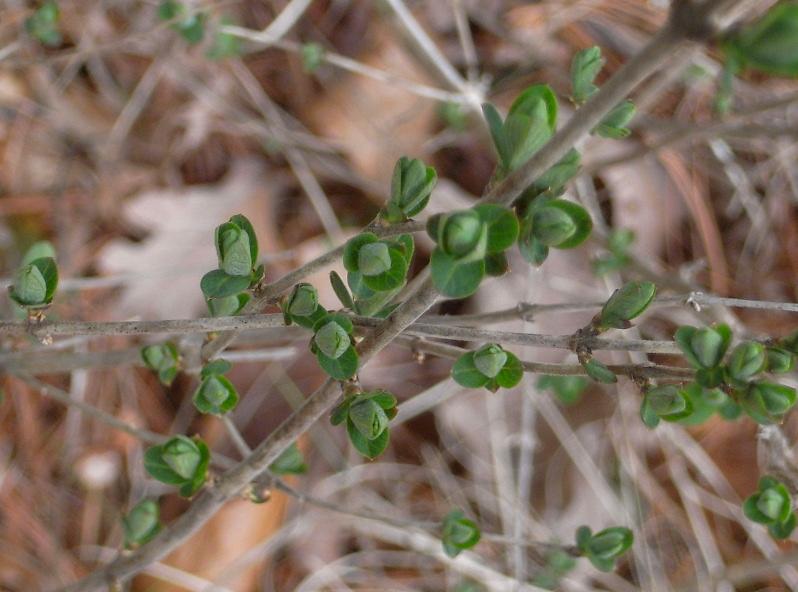
April 16, Myles Standish SF, Plymouth

Morrow's honeysuckle produces foliage earlier in spring than the majority of native shrubs and trees. All green color to be
attributed to just this invasive plant.
May 10, Ellisville Harbor State Park, Plymouth
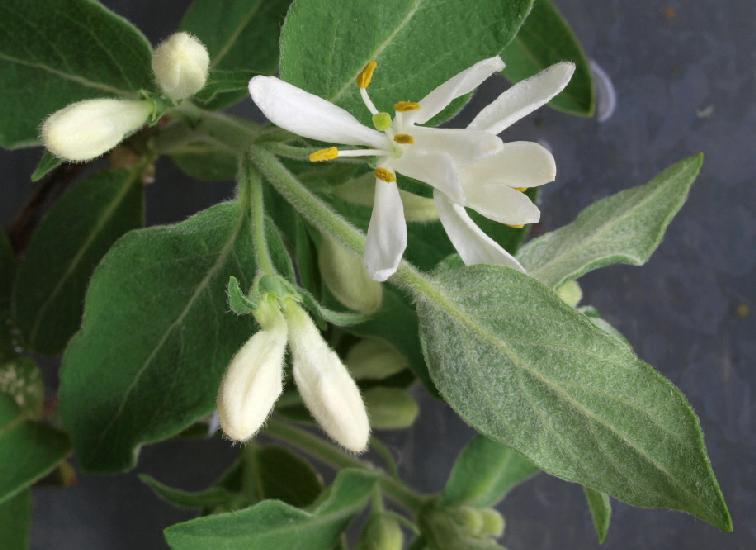
May 16, Myles Standish SF, Plymouth
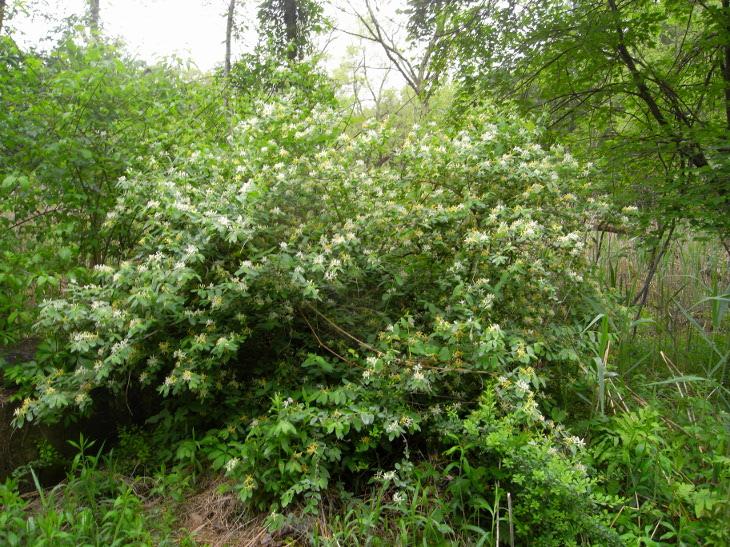
May 23, Blue Hills Res., Canton
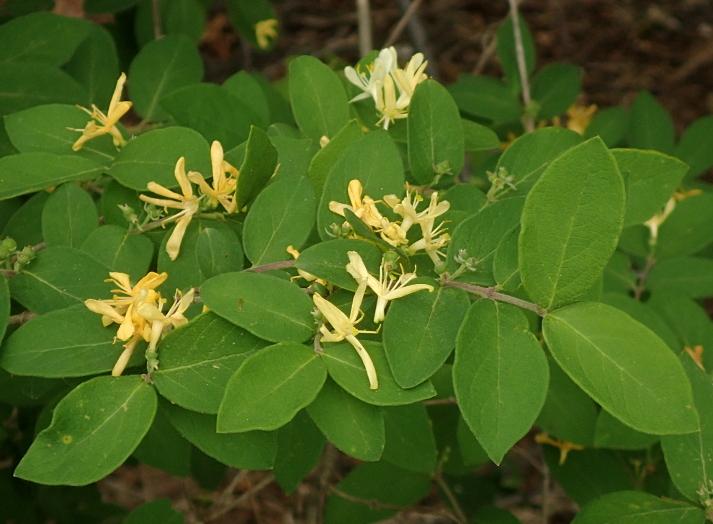
Flower color changes to yellow after pollination. May 24, Hewitts Cove, Hingham
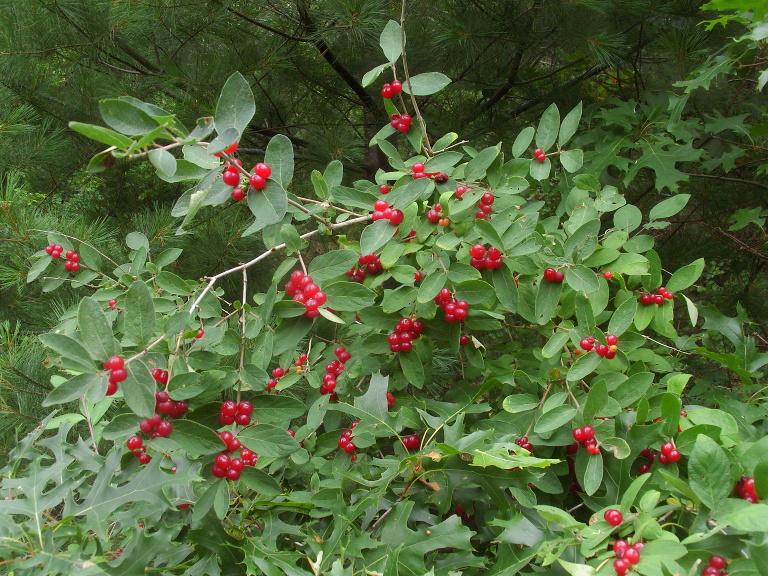
July 25, Ellisville Harbor State park, Plymouth
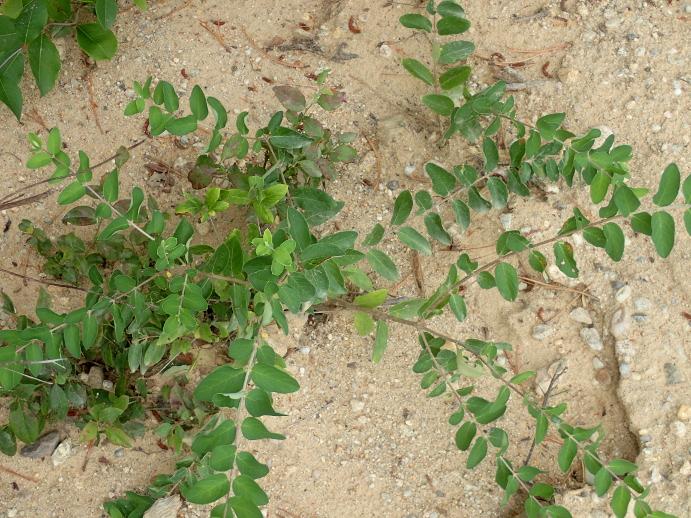
August 20, Long Duck Pond Preserve, Plymouth
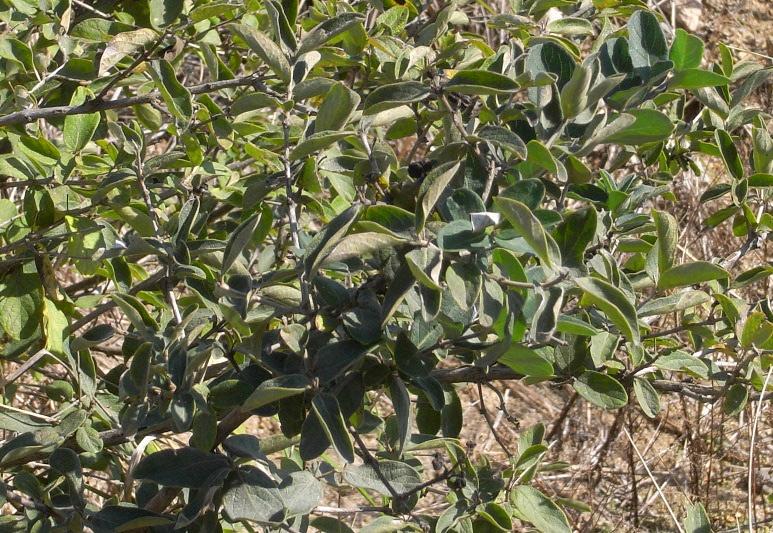
October 5, Eel River mouth, Long Beach, Plymouth
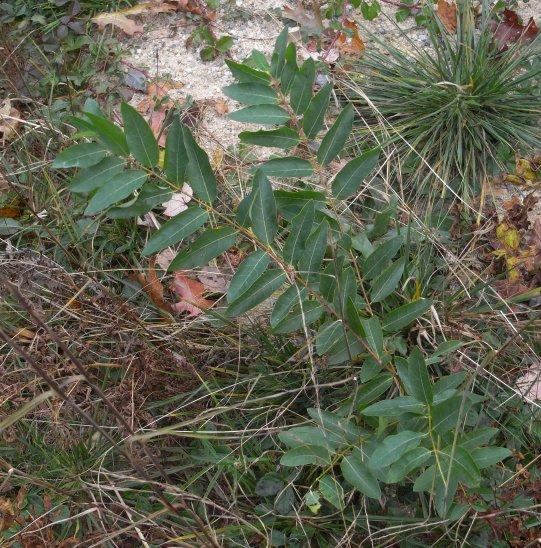
October 16, Myles Standish SF, Plymouth
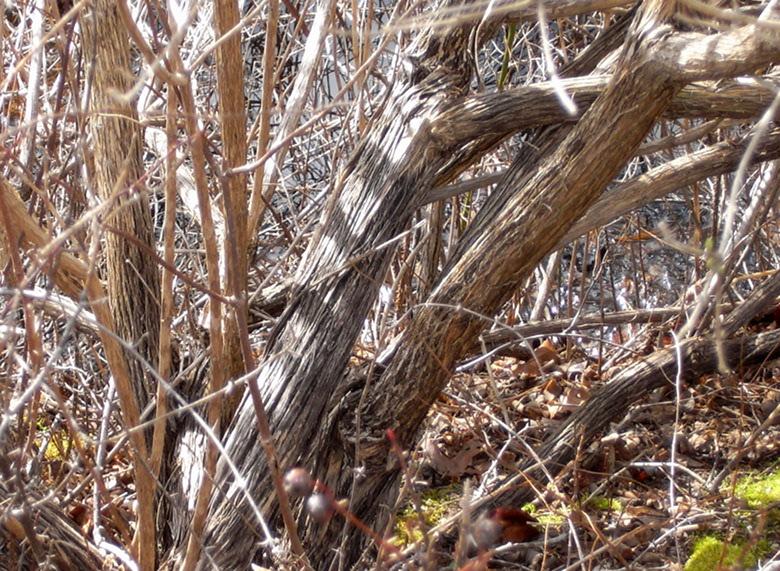
March 10, Tidmarsh Farms, Plymouth (before reconstruction)